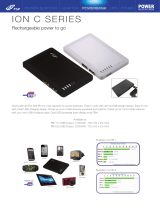
MPC5748G EVB User Guide, User Guide, Rev. 0, 08/2015
2 Freescale Semiconductor, Inc.
Contents
1. INTRODUCTION ................................................................................................................................................................................. 3
1.1. Peripheral Daughtercards ............................................................................................................................................................. 3
2. EVB FEATURES .................................................................................................................................................................................. 3
3. CONFIGURATION OVERVIEW ......................................................................................................................................................... 5
4. MCU DAUGHTERCARD INFORMATION ........................................................................................................................................ 6
4.1. Fitting a daughtercard .................................................................................................................................................................. 6
4.2. Removing a daughtercard ............................................................................................................................................................ 6
5. INITIAL CONFIGURATION ............................................................................................................................................................... 7
5.1. Power Supply Configuration ....................................................................................................................................................... 7
5.1.1. Power Supply Connectors (P21, P23) .................................................................................................................................... 7
5.1.2. Power Switch (SW5) .............................................................................................................................................................. 8
5.1.3. Regulator Power Jumper (J23) ............................................................................................................................................... 8
5.1.4. Power Status LED’s and Fuse ................................................................................................................................................ 8
5.1.5. MCU Power Supply Jumpers (J18, J19, J20, J21, J22, J23) .................................................................................................. 9
5.1.6. Daughtercard Power Jumpers (J3 to J11) ............................................................................................................................. 10
5.1.7. Peripheral Power Supply Jumpers (J24, J25) ....................................................................................................................... 11
5.1.8. EVB Voltage Regulators ...................................................................................................................................................... 11
5.2. Reset Control (J9, SW1) ............................................................................................................................................................ 13
Note that removing jumper J9 will mean that an external reset source will not reset the MCU. This will impact most debuggers
which will typically issue a reset before establishing a debug connection. .......................................................................................... 13
5.2.1. Reset LEDs ........................................................................................................................................................................... 13
5.3. MCU Clock Configuration ........................................................................................................................................................ 14
5.3.1. External Clock Input (P7) ..................................................................................................................................................... 15
5.3.2. MCU Clock Configuration (J1, J2 on Daughtercard) ........................................................................................................... 15
5.4. Debug Connectors (P8, P10) ..................................................................................................................................................... 16
5.4.1. Debug Connector Pinouts ..................................................................................................................................................... 16
6. COMMUNICATIONS & MEMORY INTERFACES: ........................................................................................................................ 17
6.1. CAN Interfaces (P14, P15, J14, J15) ......................................................................................................................................... 17
6.2. LIN Interfaces (P9, P11, J10, J12) ............................................................................................................................................. 18
6.3. USB RS232 Serial Interface (P17, J16) ..................................................................................................................................... 19
6.4. USB HOST / OTG Interfaces .................................................................................................................................................... 20
6.5. Ethernet (P6, J5, J6, J7, J8, R45, R80) ....................................................................................................................................... 20
6.6. FlexRay (P2, P3, J1, J2, J3, J4) .................................................................................................................................................. 22
6.7. SD Card Socket (P200) .............................................................................................................................................................. 23
7. AV INTERFACE CONNECTORS ...................................................................................................................................................... 23
7.1. SAI Audio Connectors (P24, P25) ............................................................................................................................................. 23
7.2. TWRPI Connectors (P26, P27) .................................................................................................................................................. 25
7.3. MLB Daughtercard Connector (P16) ......................................................................................................................................... 25
8. USER INTERFACE (I/O) .................................................................................................................................................................... 26
8.1. GPIO Matrix .............................................................................................................................................................................. 26
8.2. User Switches (SW3, SW4, SW6, SW7, P22) ........................................................................................................................... 27
8.3. Hex Encoder Switch (SW2, J26, P20) ....................................................................................................................................... 28
8.4. User LED’s (DS2, DS3, DS7, DS8, P19) .................................................................................................................................. 29
8.5. ADC Input Potentiometer (J17, RV1) ....................................................................................................................................... 29
9. MCU PORT PIN EVB FUNCTIONS .................................................................................................................................................. 30
10. DEFAULT JUMPER SUMMARY TABLE ........................................................................................................................................ 31
11. DEFAULT JUMPER DIAGRAM ....................................................................................................................................................... 33
12. REVISION HISTORY ......................................................................................................................................................................... 33
13. APPENDIX .......................................................................................................................................................................................... 34





















